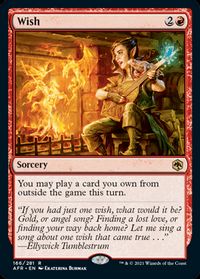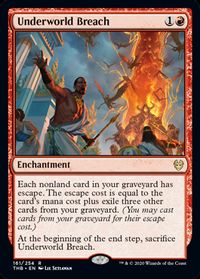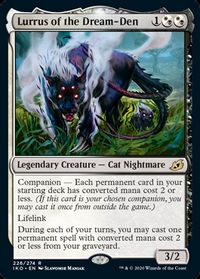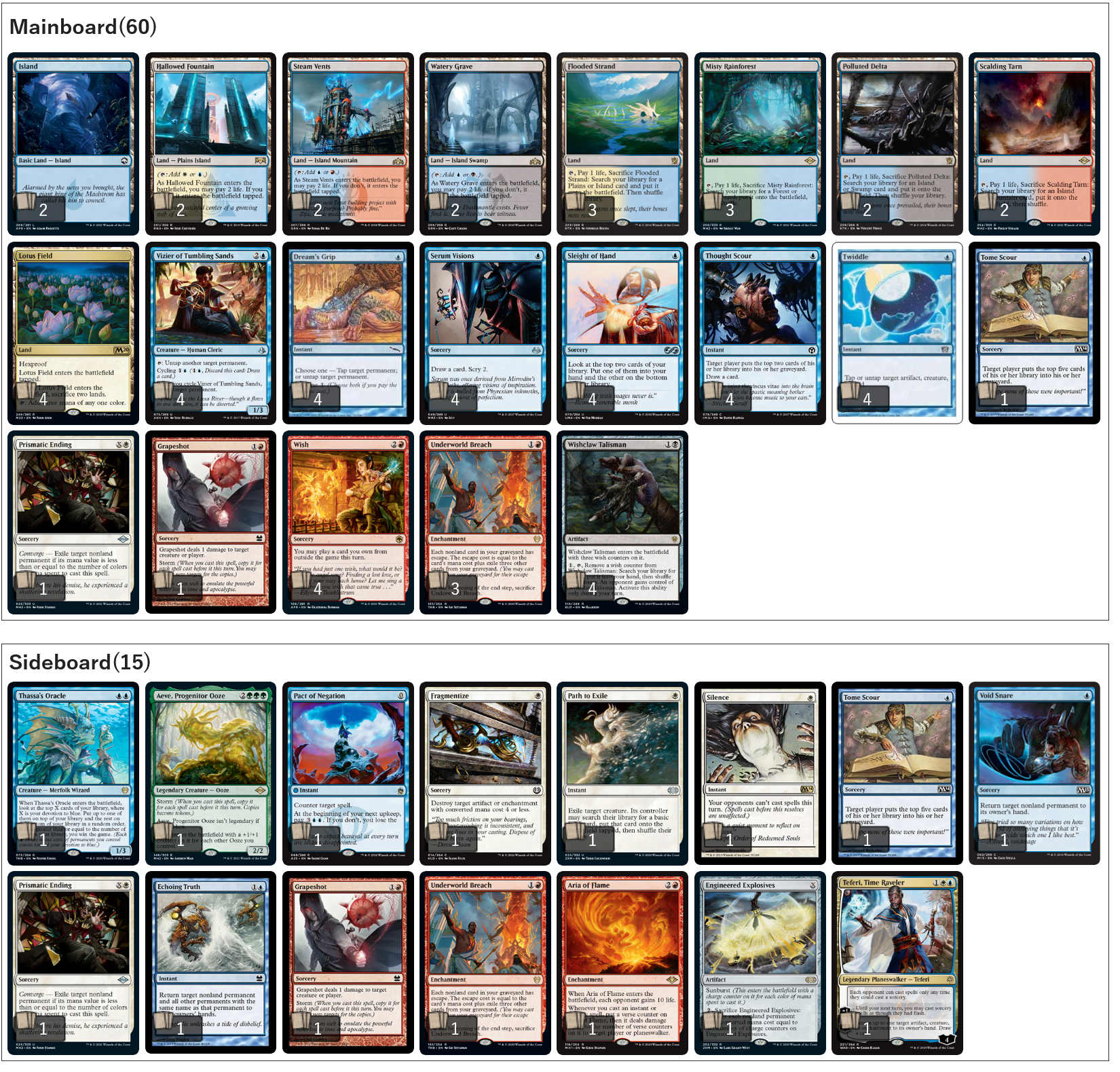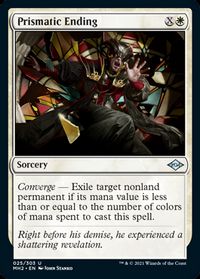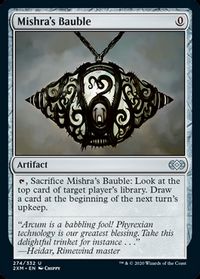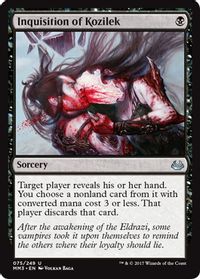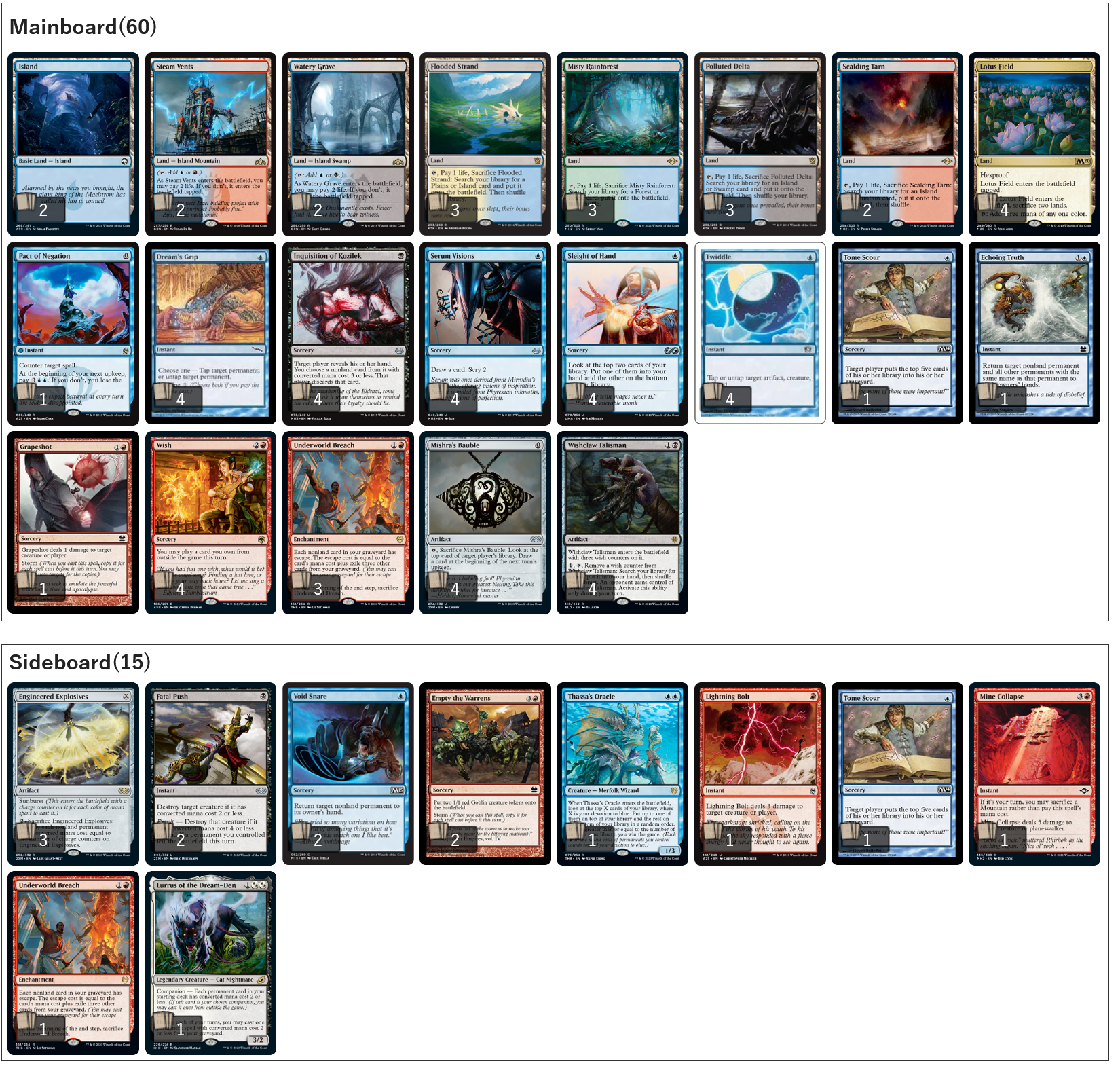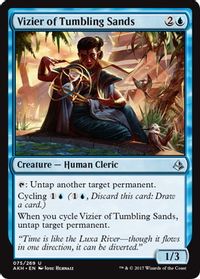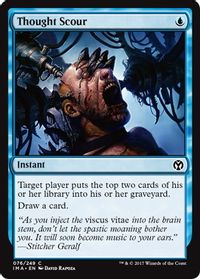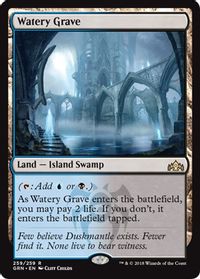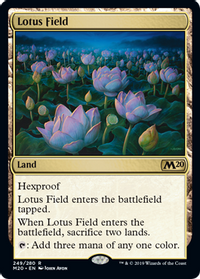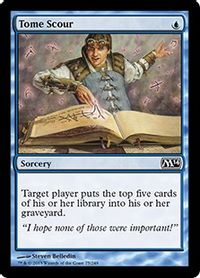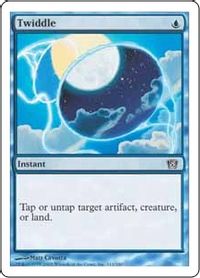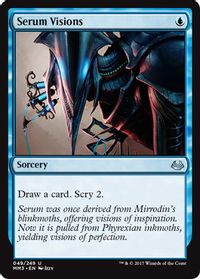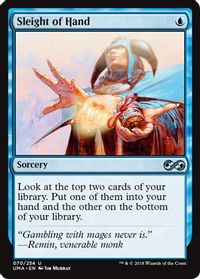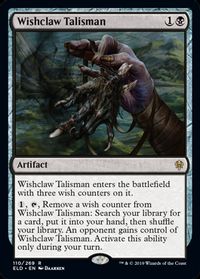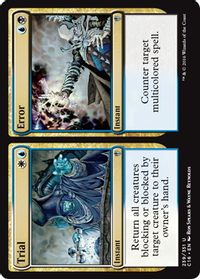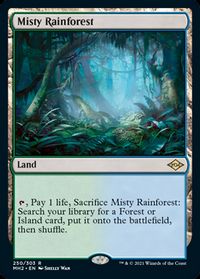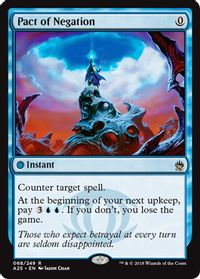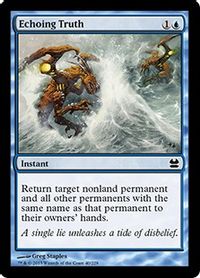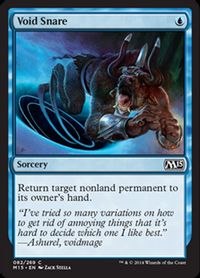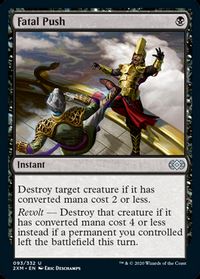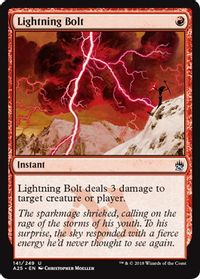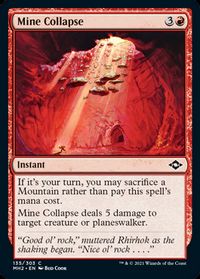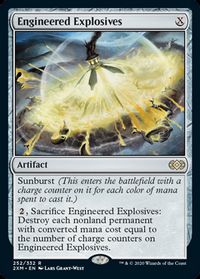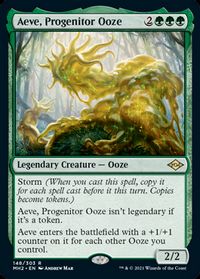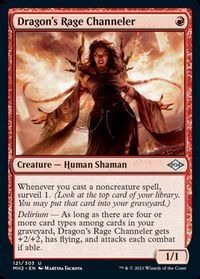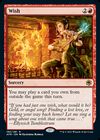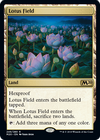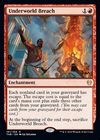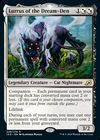Introduction
Modern Horizons 2 has completely changed the shape of Modern over the last couple of months. I’ve been spending a lot of time exploring the new cards, but with the release of D&D: Adventures in the Forgotten Realms, the card 《Wish》 has caught my eye and has had me revisit an old archetype that I looked at shortly after the Players Tour in Phoenix, Lotus Breach.
Over a year ago, my teammates and I had recently played the Pioneer version of Lotus Breach in the PT to great success, and at the time we were expecting the next Players Tour to include Modern.
We naturally started looking at the card 《Underworld Breach》 in Modern. I believe it was Allen Wu who built a starting draft of a deck with the goal of using Breach with 《Tome Scour》 and 《Twiddle》/《Dream’s Grip》 with 《Lotus Field》 to mill your entire library and cast 《Thassa’s Oracle》.
This deck looked like it was doing something powerful, but lacked a lot of resiliency. Around the time we were learning that there likely wasn’t going to be a tabletop Magic event for a long time, we also had 《Lurrus of the Dream-Den》 previewed, which looked like it was exactly what we were looking for in the archetype because we could use 《Thought Scour》 and 《Tome Scour》 as effective card selection when looking for 《Underworld Breach》, and then just cast 《Lurrus》 directly from your sideboard and win the game in the same turn.
It turned out that the un-errata’d 《Lurrus》 offered a lot to Modern in general, and given we didn’t have a big Modern tournament to prepare for anyways, we ended up scrapping the idea and focused on Standard instead.
Building the Deck
Now over a year later, after spotting 《Wish》 in the previews, I’ve started to re-explore the archetype, and I’ve been quite impressed with it. 《Wish》 allows the deck to have a lot more redundancy without as many terrible cards taking up slots in the 60, and even allows our 《Twiddle》 heavy draws to win alongside a single 《Wish》 as with 6 mana we can 《Wish》 for 《Underworld Breach》, escape 2 《Twiddle》, and then escape the same 《Wish》 for 《Tome Scour》 with a blue remaining to escape 《Twiddle》 again.
Taking some of the lessons I had already learned from the pre-Ikoria time I had tried the deck, I built the following and 5-0d my first league with it:
The deck felt powerful with a good amount of turn 3 kills, but also felt like it had a lot of room for improvement, as I only used 4 or 5 of my sideboard cards during the league.
I was suspecting that I could also make my mana better by cutting white entirely, as even though 《Prismatic Ending》 functioned nicely as a maindeck catch-all that could answer 《Chalice of the Void》, it wasn’t helping when dealing with 《Blood Moon》, and going out of my way to find White mana had the potential to slow me down in other ways.
Around the same time that I had started playing this, notable combo aficionado Bryant Cook also was working on the deck, and had posted a Grixis list featuring 《Mishra’s Bauble》, 《Lurrus of the Dream-Den》, and discard spells.
Having already looked at 《Lurrus of the Dream-Den》 in the past I was interested in trying it myself, and 《Mishra’s Bauble》 combined with fetchlands can effectively function as a 0 mana 《Opt》, which both helps us find combo and contributes in a similar fashion to 《Thought Scour》 or 《Vizier of Tumbling Sands》 at filling our graveyard at a better rate than 1 mana for 1 card.
After playing some more leagues with the deck and a ton of goldfishing, I’ve landed on the following list:
Deck List
It looks pretty similar to the first list with 《Inquisition of Kozilek》 and 《Mishra’s Bauble》 over 《Vizier of Tumbling Sands》 and 《Thought Scour》.
I’ve found 《Lurrus of the Dream-Den》 to be great in discard matchups and worth the change overall, especially in sideboard games when my opponent has likely sided out some of their removal.
While 《Vizier of Tumbling Sands》 is definitely a great card in versions without 《Lurrus of the Dream-Den》, 《Mishra’s Bauble》 has also proved itself to be great, and I might even consider continuing to play it if I didn’t have 《Lurrus of the Dream-Den》 for whatever reason.
《Inquisition of Kozilek》 gives us some proactive combo protection which is sort of exactly what the deck wanted. It’s actually somewhat uncommon to have excess mana on the turns you win, especially on turn 3, so being able to clear the path on turns 1 or 2 is great.
《Inquisition of Kozilek》 hits pretty much every card I care about with the exception of 《Force of Vigor》, and I don’t think it’s worth running 《Thoughtseize》 just for 《Force of Vigor》 because we have 《Pact of Negation》 to help play around that card.
I know that might sound a little weird at first to decide 《Inquisition of Kozilek》 is good and 《Thoughtseize》 isn’t, but this deck fetches an untapped 《Watery Grave》 almost every game, and even just casting a single 《Thoughtseize》 in a game felt like it wasn’t worth it a lot of the time.
At first even telling myself this sounded a bit weird, but after thinking about it more it sort of adds up that a combo deck that’s just trying to race in every matchup isn’t very interesting in a card that says, “You lose 2 life”.
Playing the Deck
I know this deck can look a little confusing at first, so here I’m going to do a breakdown of the way the deck executes its combo.
The goal of the deck is to generate a loop using 《Underworld Breach》, 《Lotus Field》, 《Tome Scour》, and 《Twiddle》/《Dream’s Grip》 (from here on I’ll just be calling this pair of cards 《Twiddle》).
With these cards you can tap 《Lotus Field》 for 3 blue mana, 《Tome Scour》 yourself twice, and then 《Twiddle》 the 《Lotus Field》, effectively milling yourself 10 cards, generating 3 more storm, and netting 1 card in your graveyard.
This will allow you to mill your entire library, and then either win by escaping the maindeck copy of 《Grapeshot》 (sometimes twice), or casting 《Wish》 for 《Thassa’s Oracle》.
I’ve actually found the sideboard 《Thassa’s Oracle》 quite important because sometimes in order for 《Grapeshot》 to be lethal you’d need to cast it twice, and the loop doesn’t always generate enough resources to do that. 《Grapeshot》 twice costs 1 less mana than 《Wish》 for 《Thassa’s Oracle》, but potentially 3 more cards in your graveyard if you didn’t have any spare mana when you started your loop.
When you don’t have any spare mana to start your loop you’ll need to cast 2 《Twiddle》 to get enough mana for either 2 《Grapeshot》 or 《Wish》 for 《Thassa’s Oracle》 either way. You can also sideboard in the 《Thassa’s Oracle》 against white decks to help beat 《Sanctifier en-Vec》, you will need to start your combo with a larger graveyard, but you won’t actually be reliant on using any red cards from your graveyard while executing your combo.
Assembling all of these cards may sound difficult, but with 12 cantrips, 4 《Wishclaw Talisman》, and 4 《Wish》, it’s actually surprisingly easy.
《Wishclaw Talisman》 really pulls a lot of the weight for this deck as it slots in perfectly with how 《Lotus Field》 plays as a card. We can develop it on turn 2 and sometimes it finds the only piece we’re missing on turn 3 and allows us to win.
As an extra bonus, if we have a very 《Twiddle》 heavy draw (3 or more), we can sometimes use a 《Twiddle》 to get 2 tutors from our 《Wishclaw Talisman》, adding even more consistency to the deck.
If you decide you want to start playing this deck the first step I’d recommend doing is building it with proxies and goldfish it. This might sound silly to suggest if you’re not used to doing this, but this deck is literally trying to goldfish in game, and I genuinely believe there isn’t a faster way of learning the deck than goldfishing it yourself.
It will help you with mulligans, executing your combo, and just get used to the early turn sequencing. I believe this to also be true of other linear combo decks, and I’ve goldfished a ton of Pioneer Lotus Breach, KCI, and Amulet Bloom in my Magic career.
Card Choices
I’ve already touched on the core part of the deck, but I figured I should explain why I play some of the cards I do in the flex spots.
21 Total Lands
Most people I see play this deck play less lands than this, and to be honest I’m closer to adding a land than cutting one. You absolutely need to draw 2 lands that aren’t 《Lotus Field》 to be able to develop 《Lotus Field》, and in a lot of games a 3rd land is very welcome to help us with turn 4 kills.
On top of that, having a nice mix of fetches and fetchables allow us to utilize the power of 《Mishra’s Bauble》 more frequently. As if our opening hand has both a fetchland and an 《Island》 we can 《Mishra’s Bauble》 ourselves before playing a land, and then use that information to decide which land we should lead on before playing a 《Serum Visions》 or 《Sleight of Hand》 on turn 1.
1 《Pact of Negation》
This is a card I got from Bryant Cook’s list that I’ve liked a lot. Naturally drawing 1 to help protect our combo is totally fine, and it means if we have an extra 《Wishclaw Talisman》 activation available to us, which is more likely in an interaction heavy matchup, we can potentially use the extra tutor in the middle of our combo to find 《Pact of Negation》 and protect ourselves.
1 《Echoing Truth》
This is now my catchall answer of choice. The most important feature of this slot is to be able to answer 《Chalice of the Void》, so as much as I’d prefer it to be 《Void Snare》, it just won’t do. Being a blue card means if we’ve fetched a basic 《Island》 it also can count as an answer to 《Blood Moon》.
Some lists use 《Perilous Voyage》 and I have a couple issues with the card. First of all, I’m not playing any other 2 mana bounce spells in my 75, and I want at least 1 《Echoing Truth》 to have outs to multiple of the same problematic permanent. Second, 《Perilous Voyage》 can’t be used on our own 《Underworld Breach》 in response to an 《Abrupt Decay》 or 《Force of Vigor》.
1 《Grapeshot》
This is my maindeck win condition that feels a lot better to draw than any other option. Sometimes you can just kill a 《Ragavan, Nimble Pilferer》 or 《Dragon’s Rage Channeler》 on turn 2 and buy yourself a lot of time. It also works as 2nd maindeck answer to 《Dauthi Voidwalker》, and if you cast 2 spells first, you can even 《Grapeshot》 the 《Dauthi Voidwalker》 with the storm copies and not exile your 《Grapeshot》.
4 《Inquisition of Kozilek》
I already talked about this card but I do think it’s a great addition to the deck, and I’m happy to play it over 《Opt》 or 《Thought Scour》. It sometimes just snags the problematic permanent or 《Force of Negation》, or just takes one of our opponent’s proactive cards to buy us more time. It also just gives us information and lets us know if we need more tools to win the game if our opponent has something like 《Force of Vigor》, or multiple interactive spells.
2 《Void Snare》
The first copy of 《Void Snare》 in the sideboard is a must for 《Wish》 to help us clear the way against a hate permanent. The 2nd copy I like to board in to potentially save us a mana over 《Echoing Truth》. The bounce spells in this deck also aren’t that bad to draw if you have also drawn 《Wishclaw Talisman》, as you can just activate 《Wishclaw Talisman》 for a combo piece and then return it to your own hand.
2 《Fatal Push》, 1 《Lightning Bolt》
I think 《Fatal Push》 is a little better but with so many tutors I think the split is nicer to have for certain corner cases. These are cards that are nice to side in vs Hammer Time but also give us more outs to things like 《Dauthi Voidwalker》 or 《Archon of Emeria》.
1 《Mine Collapse》
This is one I saw Caleb Scherer playing in his Storm SB with 《Wish》 and I like it a lot. It lets us answer a problematic creature a turn sooner with 《Wish》, and the cost of sacrificing a land isn’t that bad and can sometimes be upside down the line for escaping. It also helps a lot compared to a 1 mana card against specifically 《Sanctum Prelate》.
3 《Engineered Explosives》
The first copy of 《Engineered Explosives》 is necessary to 《Wish》 for against 《Chalice of the Void》. In general I just think 《Engineered Explosives》 is extremely well positioned in Modern right now.
Also a lot of decks featuring a ton of 1 mana spells are sideboarding 《Chalice of the Void》 themselves in order to play on 0 to combat the Cascade decks, but that doesn’t mean they won’t side it in against us to play on 1. 《Engineered Explosives》 is usually already pretty good against those decks in the first place, and now it has the added benefit of helping us against their 《Chalice of the Void》.
2 《Empty the Warrens》
This has been the best juke I’ve found. Anything that cares about “instants and sorceries” simply isn’t that good because our deck casts a lot of noncreature spells that aren’t instants and sorceries. I’ve tried 《Aeve, Progenitor Ooze》 and was quite unimpressed compared to 《Empty the Warrens》. The storm count for 《Aeve, Progenitor Ooze》 usually felt like about 4-5, and I’m worried my opponent can just do something like, 《Lightning Bolt》 the 3/3, play an 8/8 《Murktide Regent》, and beat the other tokens with blocking.
《Empty the Warrens》 going wide is more important than the extra power you get from 《Aeve, Progenitor Ooze》, not to mention we can’t side in 《Aeve, Progenitor Ooze》 and maintain 《Lurrus of the Dream-Den》 as a companion.
As an option to 《Wish》 for, these “juke” cards only really matter against graveyard hate, as if you have 3 mana during a 《Wish》 and you were able to cast multiple spells in the same turn, you almost always could just win with 《Underworld Breach》 if you still have access to your graveyard.
Conclusion
I’m having a ton of fun playing this deck, but I get a strange feeling alongside my wins. Right now I’m not playing against a lot of hate, or even a lot of disruption. People are playing a lot more 《Counterspell》 than 《Force of Negation》, which bodes well for the deck that can tap its opponent’s lands before trying to combo.
I think this deck is more well positioned than it is resilient, and Modern is such a huge format that it’s hard to complain when I play against an Izzet Murktide deck with maindeck 《Force of Negation》, because it’s not hard to imagine a reason why my opponent decided to play them. If the amount of 《Force of Negation》 and hate permanents rises, I don’t think this deck can keep up, but I think it’s nice to discover something that could potentially at least make people think twice about not playing as much combo hate.
If you’ve liked decks like Gifts Storm, KCI, or the Pioneer Lotus Breach deck in the past, I’d highly recommend giving this deck a shot, because it presents the same style of puzzle solving that those decks do.
I can’t endorse this deck as the best deck you can play for winning right now in Modern, but I just think it’s a lot of fun to play and build. If you’re looking to win as much as possible, I’d recommend playing with 《Dragon’s Rage Channeler》, my vote for the best card in Modern.
If you have any questions or comments feel free to contact me on twitter, @jacobnagro, and as always thanks for reading.
Jacob Nagro (Twitter / Twitch)



